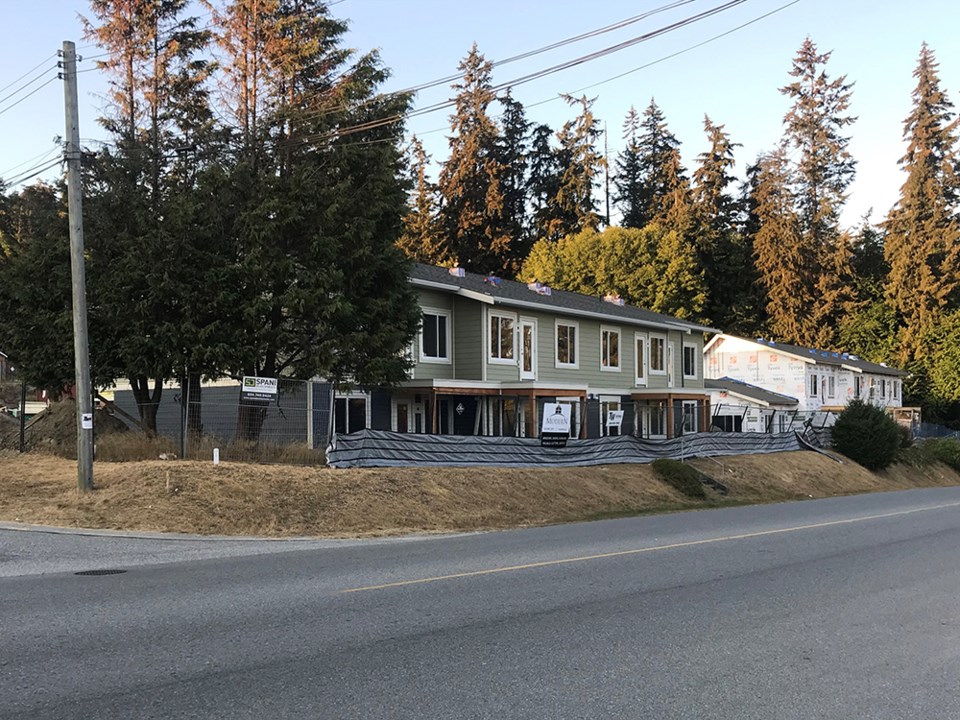City of Powell River councillors have given consent to give notice of council’s intention to consider issuance of a variance permit for the Cranberry Place housing development.
The permit in question would relax offsite works and services related to a sidewalk in front of the facility on Cranberry Street, and also, for the minimum pavement width required in front of the development to be relaxed.
At the August 30 committee of the whole meeting, chief administrative officer Russell Brewer said he was providing a report to consider an application from Life Cycle Housing Society.
“This development to create affordable housing units for families and seniors is being undertaken by a local nonprofit with a limited budget,” said Brewer. “Cranberry Street is a collector road and therefore subject to minimum standards prescribed in the infrastructure design and construction bylaw, that includes the construction of a concrete sidewalk and a minimum standard pavement width of 12 metres. The two variances sought are to not construct the sidewalk along Cranberry Street and to reduce the required pavement width from 12 to 10.5 metres.”
Brewer said the applicant’s reason for the variance is due to difficulty and expense, largely related to relocating existing infrastructure, or locating the sidewalk to accommodate existing infrastructure. He said there is an existing 400-millimetre water main located adjacent to the road and close to the surface, making it challenging. There is also a gas line in the vicinity.
“The applicant is proposing to instead maintain pedestrian connection of the site to Cranberry Street and adjacent neighbourhood by extending the sidewalks on both Dieppe Crescent and Ortona Avenue to the intersection to provide pedestrians at both intersections access to the central pedestrian walkway,” added Brewer.
Regarding the sidewalk, Brewer said given the city’s pedestrian objectives and policies, staff supports maintaining the bylaw requirements for the construction of a sidewalk along Cranberry Street. He said, however, also considering the objectives and policies relating to affordable housing, and acknowledging there may be additional expenses and difficulties constructing the sidewalk, council could consider allocating $50,000 from the affordable housing reserve fund to Life Cycle to contribute to the cost of building the sidewalk.
With respect to the pavement width, though the proposed 10.5 metres is less than the allowable width, staff considers it likely has no likely quantifiable impact on vehicular traffic, and therefore recommends supporting that variance item.
Councillors comment
Councillor Cindy Elliott expressed concern about wheelchair accessibility if the sidewalk is not constructed.
“If this variance was approved, it sounds like it would really hinder accessibility,” said Elliott.
Peter Treuheit, an architect from Mobius Architecture who designed the facility, said the original intent when it was financially and physically feasible to put in the sidewalk, there was a ramp proposed from the centre of the site that would make it wheelchair accessible to the sidewalk.
“With the complexity of trying to construct the sidewalk, the ramp would not be feasible anymore, just because there would be no sidewalk,” said Trueheit. “Accessibility would be maintained onsite. If someone in a wheelchair would be in this development, they would have to arrive by car.”
He said a survey is being done on Dieppe Crescent to see if a sidewalk can be constructed to accessibility ramp standards.
Mayor Dave Formosa said he could not support not putting a sidewalk in front of the development, but he could support a $50,000 city donation.
Councillor George Doubt also wanted to see a sidewalk and an accessibility ramp for a walkable neighbourhood, because walkable and accessible neighbourhoods are important.
Life Cycle president Frances Ladret said the society is also concerned about accessibility. She said the variance application came about because of a meeting with city staff, who indicated they did not want construction going on anywhere near the asbestos-containing water main.
“It’s really for those practical considerations,” said Ladret. “It eliminates that nice accessibility with the ramp going down the bank. If we had to relocate that water main, it would be hugely expensive. The only thing we could come up with was not putting the sidewalk in. The accessibility would be limited for sure.”
The committee voted to give notice in accordance with section 499 of the Local Government Act of council’s intention to consider the development variance permit. The motion narrowly passed, with Formosa and councillors Doubt and Palm opposed.
Notice will be given to all owners and tenants of property located within 61 metres of the boundary of the subject property.



